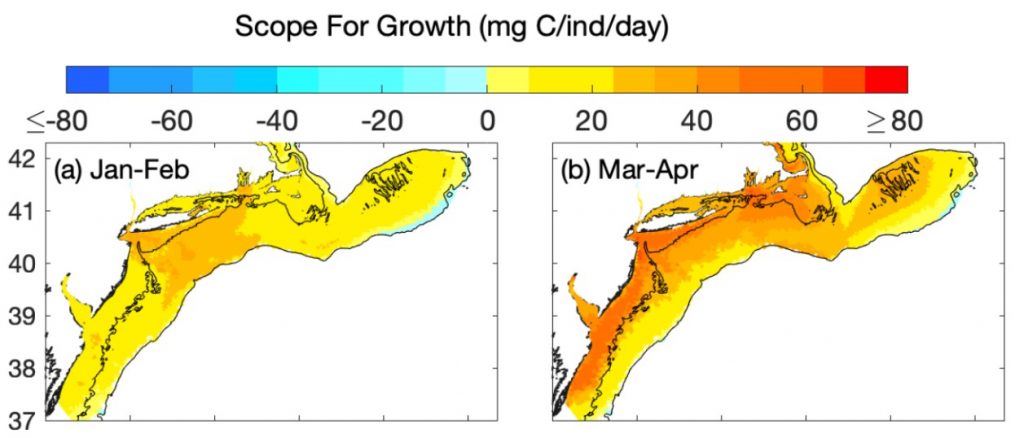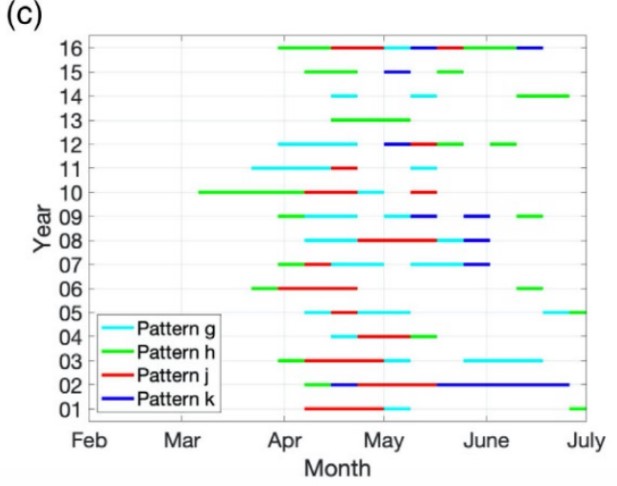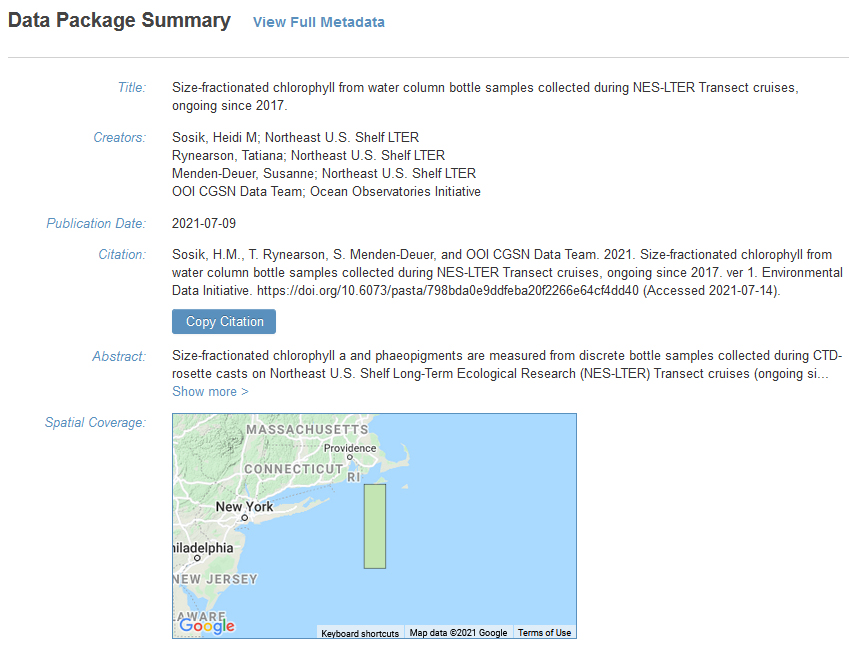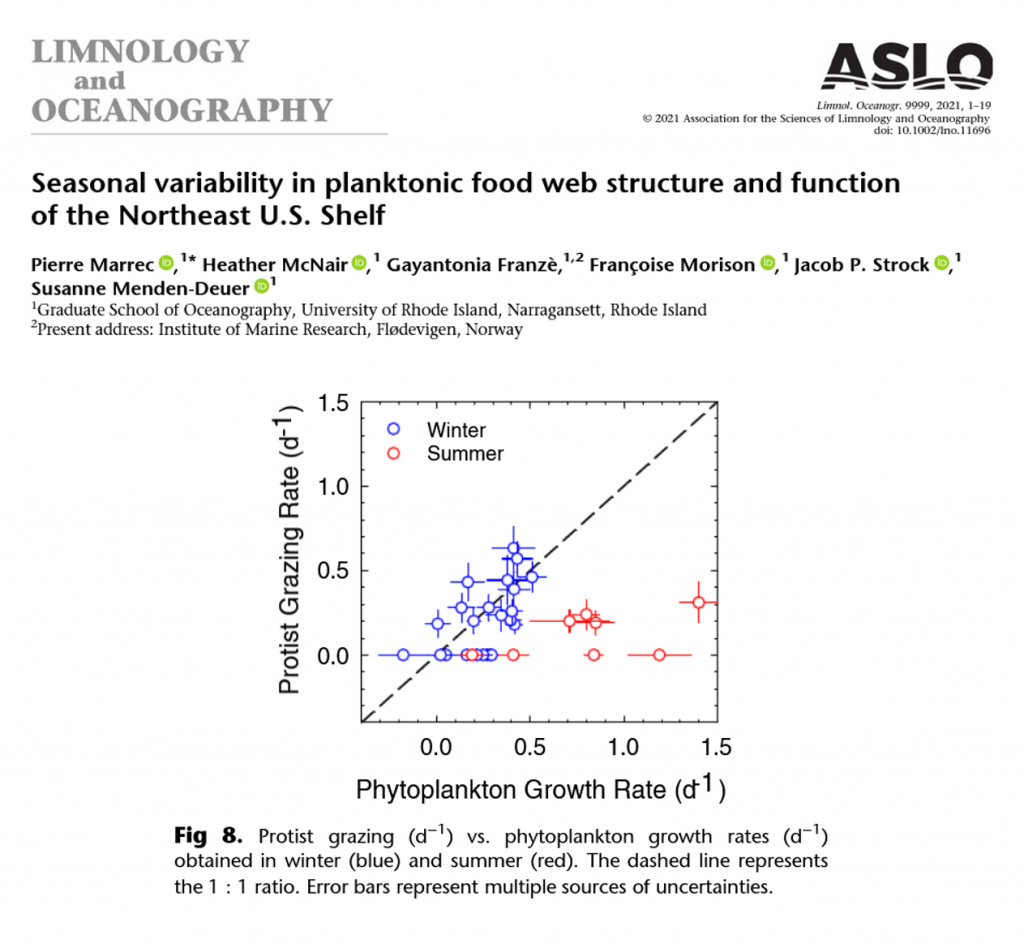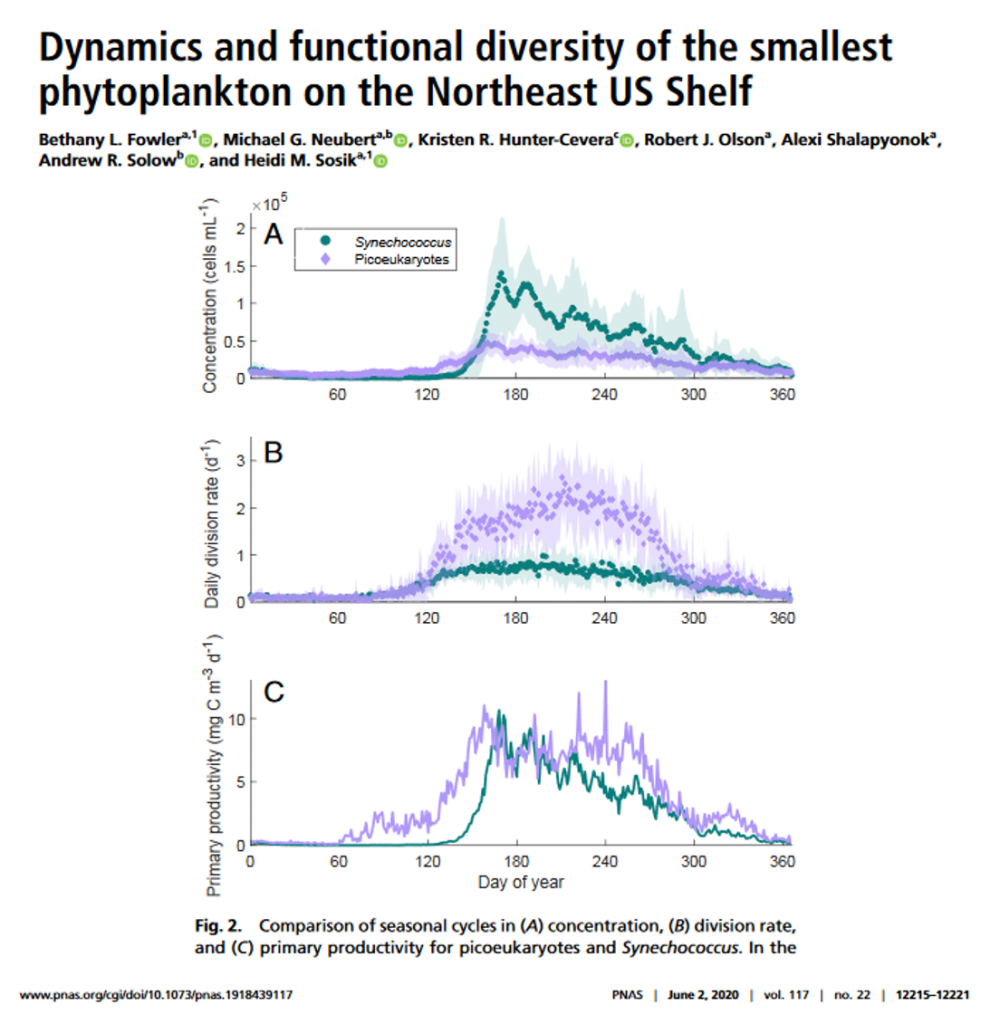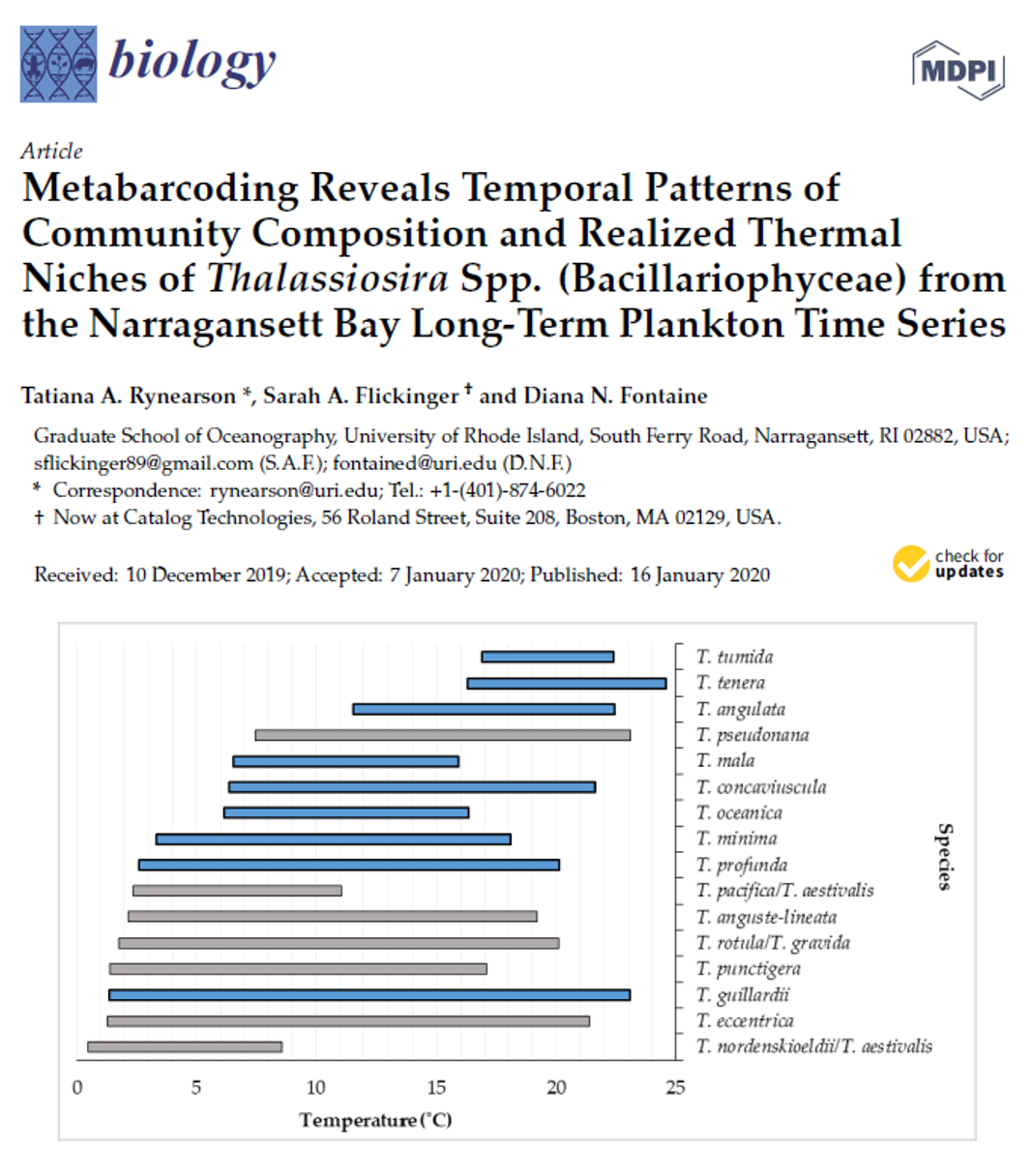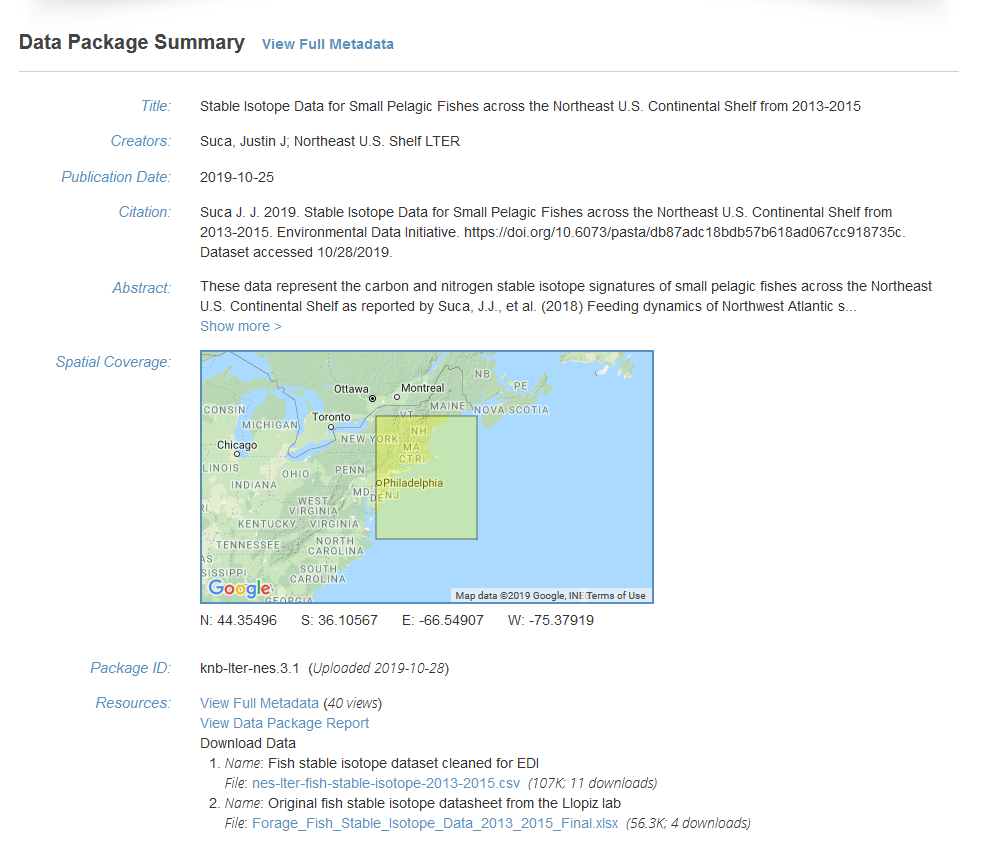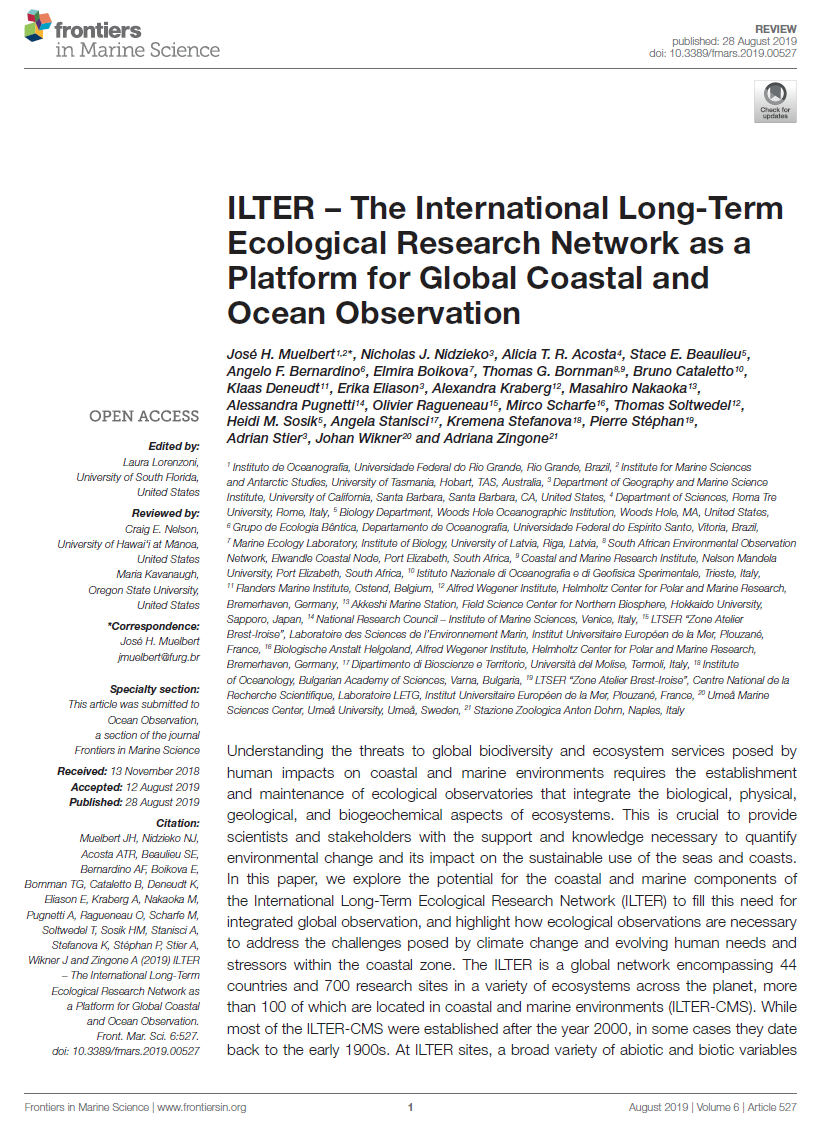Research News
Former REU Publishes Research
S. Alejandra Castillo Cieza was an REU in Co-PI Rachel Stanley’s chemistry lab at Wellesley College in 2020 and 2021. It wasn’t just a pandemic pushing Alejandra to dig deeper into data analysis and lab work. She’s driven to unraveling data-driven stories and sharing them as she is now pursuing her PhD in Biology at…
Read MoreUndergraduate students present research on the Northeast U.S. Shelf ecosystem
This summer the Northeast U.S. Shelf Long-Term Ecological Research (NES-LTER) project hosted three undergraduate researchers in Woods Hole. All three presented posters at Woods Hole Oceanographic Institution (WHOI)’s annual summer student poster symposium held on August 10, 2023. Victoria Abunaw, a rising senior in Earth and Atmospheric Sciences at Cornell University, participated in WHOI’s Summer…
Read MoreScallop Balance- Modeling for Management
In the recent publication of Fisheries Oceanography, Zhengchen Zang et al. share their sea scallop scope for growth (SFG) model. Scallop energy dynamics depend on the spatial and seasonal variability on the Northeast US Shelf. The scallop SFG model is therefore driven by high-resolution hydrodynamic and biological models and provides key information about scallop growth…
Read MoreL&O Letters- When It’s Spring in the Gulf of Maine
In a recent publication to Limnology and Oceanography Letters, Zhengchen Zang et al. share work on the role of silicate in the Gulf of Maine. In this study, they employed an artificial neural network method to identify the spring blooms from satellite images and reconstructed the spring bloom magnitude with strong interannual variability. This study…
Read MoreChlorophyll data published for rosette casts on NES-LTER Transect cruises since 2017
NES-LTER is pleased to announce our first data publication in collaboration with the Ocean Observatories Initiative (OOI): Sosik, H.M., T. Rynearson, S. Menden-Deuer, and OOI CGSN Data Team. 2021. Size-fractionated chlorophyll from water column bottle samples collected during NES-LTER Transect cruises, ongoing since 2017. ver 1. Environmental Data Initiative. https://doi.org/10.6073/pasta/798bda0e9ddfeba20f2266e64cf4dd40 (Accessed YYYY-MM-DD) This data package…
Read MoreNew article on seasonal variability in the planktonic food web of the Northeast U.S. Shelf
NES-LTER postdoctoral researcher Pierre Marrec and others in PI Susanne Menden-Deuer’s lab just published a new article: “Seasonal variability in planktonic food web structure and function of the Northeast U.S. Shelf” in Limnology and Oceanography (https://doi.org/10.1002/lno.11696). Marrec et al., 2021, https://doi.org/10.1002/lno.11696
Read MoreNew article, model, and data published for eukaryote picophytoplankton at MVCO
Graduate student Bethany Fowler and co-authors at WHOI just published a new article in PNAS: Dynamics and functional diversity of the smallest phytoplankton on the Northeast US Shelf. They found that picoeukaryotes contribute more to the region’s primary productivity than would be inferred from their abundance alone. In addition to the journal article, the model…
Read MoreNew article on community composition and realized thermal niches of diatoms
NES-LTER PI Tatiana Rynearson, Sarah A. Flickinger, and graduate student Diana Fontaine just published a new article: “Metabarcoding Reveals Temporal Patterns of Community Composition and Realized Thermal Niches of Thalassiosira Spp. (Bacillariophyceae) from the Narragansett Bay Long-Term Plankton Time Series” (https://doi.org/10.3390/biology9010019).
Read MorePelagic fish data packages available online at EDI!
This fall Jaxine Wolfe joined us as an Information Systems Assistant to help publish NES-LTER data to the Environmental Data Initiative (EDI) repository. Her first two data packages are now available online, both prepared to accompany WHOI graduate student Justin Suca’s recent journal article. The data packages, for pelagic fish diet composition and stable isotopes,…
Read MoreILTER – The International Long-Term Ecological Research Network as a Platform for Global Coastal and Ocean Observation
Article in Frontiers in Marine Science, published 28 August 2019, with co-authors Heidi Sosik and Stace Beaulieu: https://doi.org/10.3389/fmars.2019.00527
Read More


